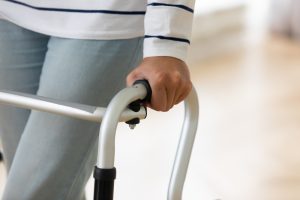Researchers from Singapore have successfully used Crispr-Cas13, a gene-editing tool, to combat the virus responsible for hand, foot and mouth disease (HFMD).
The researchers say that this technique could potentially develop treatments for many other diseases that RNA viruses cause, including influenza, dengue, Covid-19, and Ebola.The researchers are from the Genome Institute of Singapore (GIS) and the National University of Singapore’s Yong Loo Lin School of Medicine (NUS Medicine)
A New Hope in Fighting Viruses
The findings, published in the medical journal eBioMedicine in July, reveal that Crispr-Cas13 editor, delivered by adeno-associated viruses, can directly target and eliminate RNA viruses in laboratory models. CRISPR technology offers new prospects for developing treatments for other RNA viruses, including influenza, dengue, Covid-19 and Ebola.
HFMD: A Common Yet Threatening Disease
Hand, Foot, and Mouth Disease (HFMD) is a common viral illness primarily affecting infants and children. However, it can also occur in adults. It is caused by the Enterovirus genus, particularly the Coxsackievirus. HFMD manifests with symptoms such as fever, sore throat, painful red blisters on the tongue, inside the cheeks, hands, feet, and sometimes the buttocks. The blisters and rashes might appear as tiny red spots that blister and then often become ulcers.
HFMD is highly contagious. It spreads through contact with infected bodily fluids, including saliva, nasal secretions, and the fluid from blisters. It is usually mild and self-limiting, resolving within a week or two. However, in rare cases, it can lead to more serious complications such as viral meningitis or encephalitis, inflammation of the brain. There is currently no specific treatment for HFMD, and care is generally focused on alleviating symptoms. Preventive measures include maintaining good hygiene practices like frequent hand washing and avoiding close contact with those infected.
In 2022, Singapore reported 4,098 cases of HFMD.
The Science Behind the Breakthrough
Crispr-Cas13 alters a cell’s RNA and has the potential to provide therapeutic solutions for a broader range of previously untreatable diseases. This is unlike the Nobel Prize-winning Crispr-Cas9, which edits DNA. This opens up new doors for medicine, especially in the battle against RNA viruses.
Targeting the HFMD Virus
Currently, there’s no clinically approved treatment for EV-A71, the virus causing HFMD. However, the scientists used Crispr-Cas13 to design guide RNAs that cut viral RNA across different strains, thus destroying the viruses. Associate Director and Principal Scientist at GIS, Dr Chew Wei Leong, confirmed that this technology can both prevent future infections and treat ongoing ones.
Implications and Future Prospects
This research reveals that the Crispr-Cas13 therapy clears the EV-A71 infection, leaving less than 0.1 per cent of the viruses in previously infected cells. Therefore, it is successful in preventing organ damage and mortality. It could redefine how viruses and diseases are treated, resulting in quicker relief and lasting cures for patients.
Furthermore, Crispr-Cas13 could be used against a broad spectrum of diseases ranging from viral infections to cancers, and genetic illnesses. Traditional drugs, typically bespoke for individual diseases, might no longer be the only option.
Nonetheless, Associate Professor Justin Chu of NUS Medicine notes that further clinical research and development is essential to bring such treatments to patients safely and effectively.
Conclusion
This groundbreaking achievement shows the promising potential of gene-editing techniques in battling diseases caused by RNA viruses. The use of Crispr-Cas13 in Asia’s medical landscape presents fresh opportunities for developing innovative treatments. The world is now looking towards the next stages of this research, where the hopes of harnessing this technology in broader applications could revolutionize the medical field.












